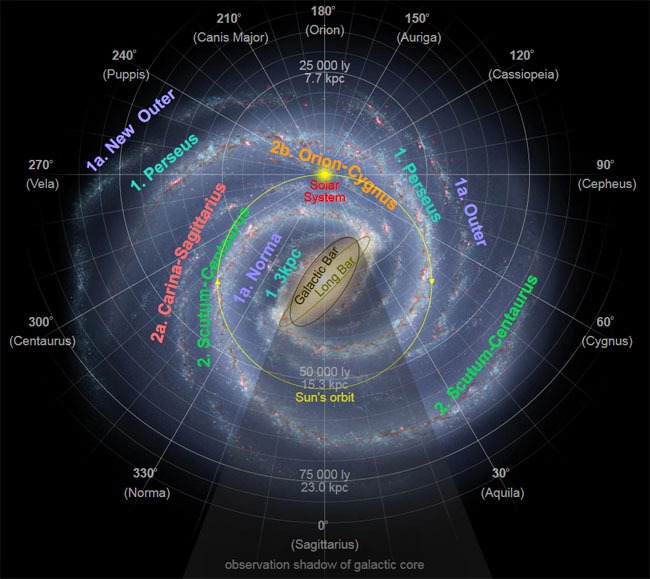Interesting Notes About the Milky Way
Well I think they are.
As most people understand now, our solar system comprises of the Earth, Mars, Jupiter, Saturn, and some other planets, with the sun at the centre holding it all together with gravity. Our solar system is located in a galaxy we call the Milky Way and is just one of about 100 billion solar systems (suns with some planets) that make up the Milky Way galaxy.
Like about 80 percent of the galaxies in the universe, as far we know, the Milky Way galaxy is more or less flat (in galactic terms), is a spiral galaxy with a number of spiral arms, and it is rotating in space (which is jus about true of everything in space—everything is rotating, being rotated around, or is rotating around something).
We are pretty sure our Milky Way galaxy has four primary central spiral arms. There are also two ‘separated’ arms; arms that do not fling out from the core of the galaxy but are sort of snapped off and separated. From what we can see and work out mathematically the solar system that our little plant is a part of is in one of these separated spiral arms and is located about a third of the way out from the centre of the galaxy.
We call the arm that our solar system is in Orion-Cygnus, the Orion-Cygnus spiral, or the Orion-Cygnus arm. This little separated arm is shown in the picture below although it is almost hidden by the name written above it. The location of our sun, and hence our solar system, is indicated by the yellow blob.
We are able to make very precise calculations about how fast our solar system is moving through space around the galaxy. Our solar system is orbiting the centre of the Milky Way galaxy at 486,000 miles per hour (632 times the speed of sound). But even at this break-neck speed our orbit path around the Milky Way is so big that it takes our solar system 226 million years to complete a single orbit.
To make this seem even more awesome, to put it another way, man has only existed on Earth for about 1/1250th or 0.0008 of a galaxy orbit! So since man has lived on the planet our solar system has only moved 1/1250th of the way around the Milky Way!
The centre of the Milky Way comprises of a massive black hole with a mass around 2.6 million times that of our sun.
As our solar system zooms around the centre of the Milky Way at 632 times the speed of sound it also wobbles up and down a bit, like when you spin a paper disk on a pencil and the paper flexes up and down. Each complete wobble cycle takes 64 millions years.


